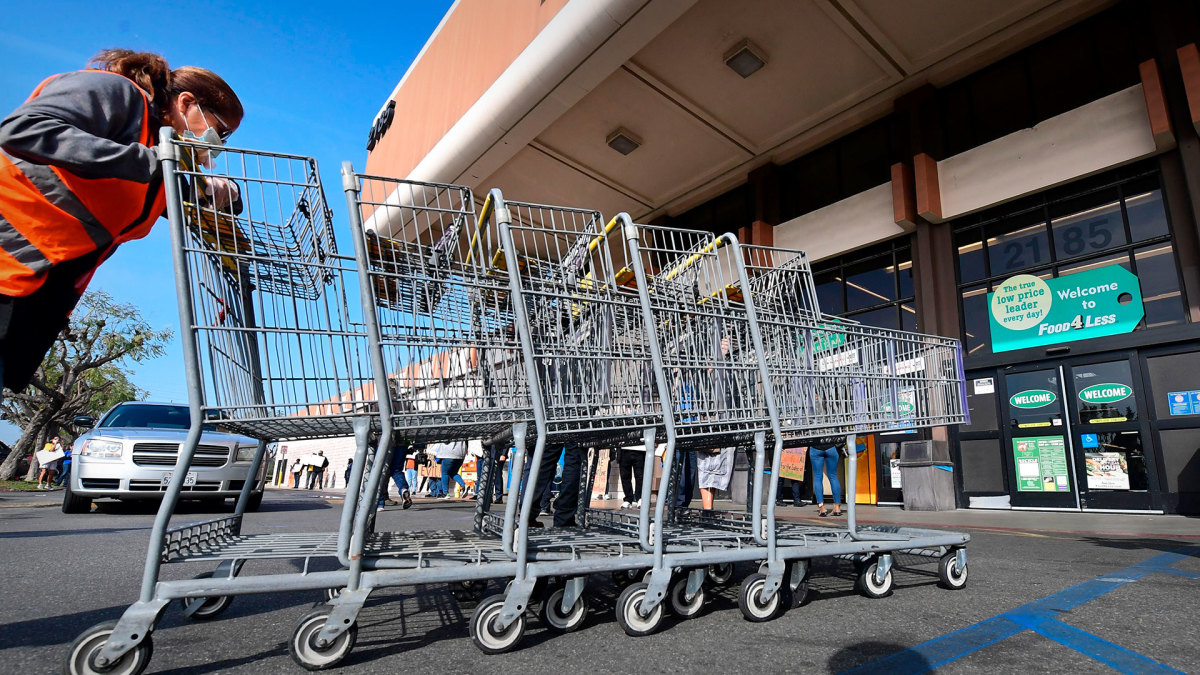
Multiple brands want a piece of the lucrative, albeit thin-margin, grocery business, but they all seem to be using the same tactics to gain a bigger market share.
Walmart, Kroger, Target, Costco, Aldi, and even Amazon have all leaned on house brands to offer lower prices.
Consumers generally accept house brands like Costco's (COST) -) Kirkland Signature and Walmart's Great Value line. The days when these brands carry a stigma have passed as a number of retailers have invested heavily in making their house brands as high-quality as the name brands they compete with.
Related: Popular retailer moves from Chapter 11 bankruptcy to liquidation
Target (TGT) -) has built a lot of its business model around showcasing owned-and-operated brands. The retail giant has grouped many of its grocery products under the Good & Gather brand, and house brands are a key part of closely held Aldi's value proposition as well.
It's a setup designed to deliver value, but there's nothing fun about it. Yes, consumers get a good product at a good price, but retailers like TJX Cos.' (TJX) -) Marshalls, T.J. Maxx and HomeGoods have shown that shopping can actually be entertainment when consumers get unexpected bargains on name brands.
That model hasn't been widely used in the grocery space, but the fast-growing Grocery Outlet wants to change that. The Emeryville, Calif. chain, which has 400 stores and wants to grow to 4,000, approaches grocery discounts in a completely different way than its rivals.

Image source: FREDERIC J. BROWN/AFP via Getty Images
Grocery Outlet has a different model
Proximity and convenience play a major role in the grocery space. People shop at stores that are convenient for them. That's given an edge to regional chains like Kroger (KR) -) and Publix, which have built their store footprints where their customers live.
Walmart (WMT) -) has a similar edge, given how close the vast majority of Americans live to its superstores.
Costco and Aldi have generally followed a different model. Their stores may not be as convenient to as many people, but they offer added value and a differentiated shopping experience built around low prices.
Grocery Outlet wants to offer a different shopping model that customers will seek out, even if it's not as convenient as Walmart, Kroger, Target, Publix or other grocery chains. The chain explains on its website:
"At Grocery Outlet, we love brands. Like, really love them. That’s why we work so hard every day to bring our customers the brands they love at prices that are nothing short of pure bliss."
How does Grocery Outlet work?
Grocery Outlet (GO) -) works a lot like clothing stores that use a treasure-hunt model. The selection varies based on what the chain's buyers can purchase at any given time.
The company says its buyers travel "thousands of miles each year to find the most thrilling deals on brand-name groceries. Whether it’s through packaging changes, surplus inventory, or product overruns, our buyers source it all – everything from fresh meat and produce to our natural and organic Nosh items to the Wow deals we can hardly believe ourselves," the company added.
Shoppers might get an item in a flavor that never quite caught on or be able to buy goods in packaging that has been discontinued or changed. Grocery Outlet calls itself an "opportunistic buyer," but it also wants customers to know that it also operates full-service grocery stores.
"At Grocery Outlet, we think it’s important to provide all of the basics – like milk, eggs, and meat – for our customer’s convenience," according to the chain.
"However, these aren’t products that can typically be sourced opportunistically. So, to ensure they’re available, we source them conventionally, just like other grocery stores, making sure to price them at or below the lowest price in town."
Grocery Outlet typically sells name-brand items at 40% to 70% off the list prices.
Get investment guidance from trusted portfolio managers without the management fees. Sign up for Action Alerts PLUS now.







